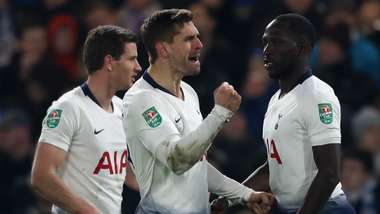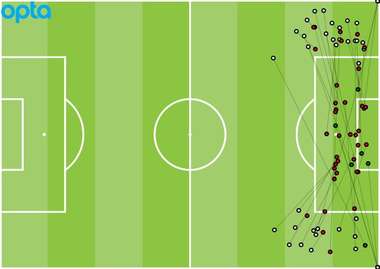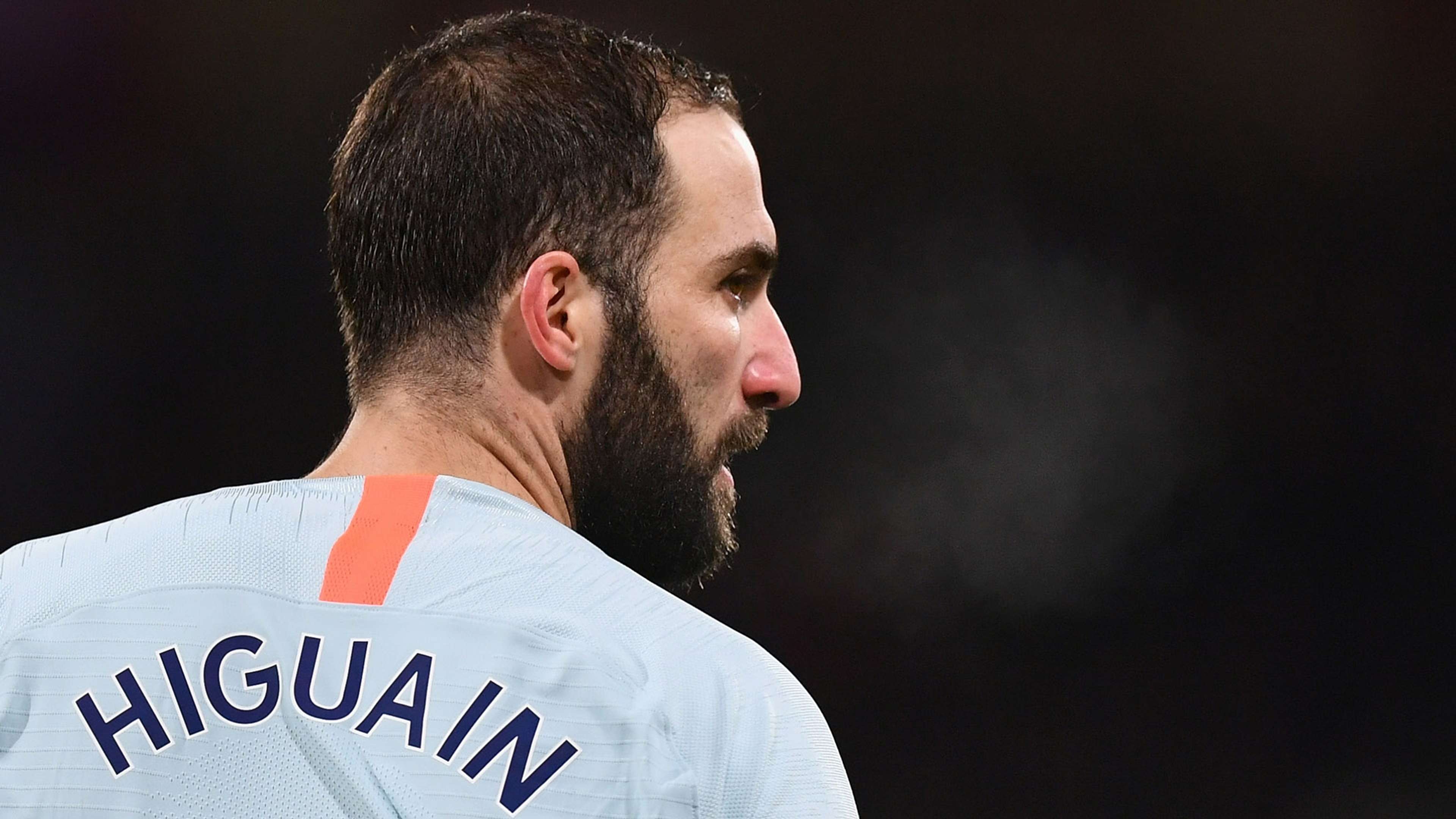It was a midweek round of shocks in the Premier League, with only two of the top six recording victories, the cold and snow seemingly freezing limbs in sluggish outings for Chelsea, Liverpool, Manchester United and Manchester City.
In the circumstances, Liverpool fans can feel relieved to have extended their lead at the top of the table to five points.
On frozen winter days like these, it is often the old-school tactics – the sort invented for mud-soaked pitches – that work best.
Both Fulham and Tottenham recorded wins thanks to their long balls forward to the big men up front, while the nimble-footed patterns of Man City and Liverpool led only to frustration.
Here are five tactical things you might not have noticed from the latest round of Premier League action...
SILVER LINING IN SOLSKJAER'S UNSUCCESSFUL RESHUFFLE
 Getty Images
Getty ImagesPerhaps overly confident following his perfect start, Ole Gunnar Solskjaer made big changes to his starting line-up for the visit of Burnley despite the four-day break either side of the match.
The fact that the fringe players (Andreas Pereira, Juan Mata, and Romelu Lukaku) played badly while mainstays prior to Tuesday (Ander Herrera and Jesse Lingard) were sorely missed proves the ‘Solskjaer effect’ wasn’t just a morale boost. That is the silver lining for United fans ruing two points dropped in the race for a top-four finish.
Solskjaer has deserved more credit than he’s been getting for his use of Herrera in midfield and, against Burnley, Pereira struggled in possession where the Spaniard had previously added rhythm.
Pereira's first telling action of the game was a wayward pass that triggered a period of pressure for the visitors, and for the rest of the first half his mostly-sideways passes slowed United right down, making it easy for the visitors to hold their deep defensive shape.
To top it off, it was an error from Pereira – getting caught on the ball on the edge of his own box – that led to Burnley’s opener.
Fluency in the final third has been another Solskjaer trait this season, with Lingard’s movement the most important factor, while Marcus Rashford’s restoration to a centre-forward role has been a revelation.
Why, then, did the Norwegian remove both players?
United were lethargic with Romelu Lukaku ambling up front, Rashford struggled to influence the game from the left, and Paul Pogba and Mata were too far apart, meaning United couldn’t play high-tempo short passes to pull Burnley out of their shell.

All Pereira passes v Burnley
EMERY'S FORMATION CHANGE PROVES DECISIVE
 Getty Images
Getty ImagesFor the opening 45 minutes at the Emirates on Tuesday night Arsenal’s tactical performance was dreadful – at both ends of the pitch.
In a diamond 4-4-2, Mohamed Elneny struggled to shut down Cardiff City’s counter-attacks from the base of midfield.
The visitors continually played direct balls through the middle and outmuscled the makeshift Arsenal back-line and, from here, Cardiff quickly worked the ball out to the left to target Stephan Lichtsteiner.
He regularly got tight to his man but failed to make a tackle, getting taken out of the game as Bobby Reid drifted into his channel from a central attacking midfield position.
In attack, Arsenal’s narrow midfield shape simply didn’t have enough energy without Aaron Ramsey scurrying across the width of the pitch to link with the forwards; Mesut Ozil regularly dropped into a harmless wide right position that left Arsenal flat.
But Emery’s switch to 4-2-3-1 at half-time, with Alex Iwobi replacing Elneny, changed the course of the game – albeit only mildly improving Arsenal’s performance.
Now with a double pivot of Lucas Torreira and Matteo Guendouzi at the base of midfield, Cardiff’s attempts to launch a counter through the middle were nullified.
Arsenal used their increasing control to gradually grind Cardiff down, two Sol Bamba errors ultimately handing them victory.
What’s more, Pierre-Emerick Aubameyang and Alexandre Lacazette improved once taking turns to start from the right wing; both are better when building a head of steam by making diagonal runs from deep.
CITY PUNISHED FOR PEP'S POINTLESS SHIELD

Man City just couldn’t find their rhythm at St James' Park.
Their slow, careless passing allowed Newcastle to sit back in a 5-4-1 formation and simply shuffle across in their shape, engaging the City players only in the final third. It was almost as if City couldn’t shake themselves out of a complacency caused by scoring so early.
But the biggest flaw in Pep Guardiola’s system was the use of inverted full-backs for a match in which City were always going to need width.
The best way to stretch a narrow defensive blockade – forcing players out of their shape and then attacking in the gaps – is to hit the flanks and frequently switch the play.
Guardiola instructed Danilo and Kyle Walker to sit either side of Fernandinho during long periods of City pressure, forming a pointless three-man shield behind the play that left Leroy Sane and Raheem Sterling isolated in the wide positions.
It is no wonder the wingers completed just three dribbles between them, while Danilo and Walker attempted a mere four crosses in total.
 Opta/Goal
Opta/GoalKyle Walker touches v Newcastle
 Opta/Goal
Opta/GoalDanilo touches v Newcastle
HIGUAIN OFFERS NO QUICK FIX TO SARRI'S PROBLEMS
 Getty
GettyBournemouth thoroughly deserved their victory over Chelsea on Wednesday night despite holding just 32 per cent possession.
This was the perfect opposition for a team that loves to counter-attack, as a lacklustre, uncomfortable looking Chelsea allowed their sluggishness in the final third to infect their defensive concentration.
It was quite incredible how often Eddie Howe’s side broke behind David Luiz and Antonio Rudiger, with the full-backs nowhere to be seen.
Bournemouth’s breaks betrayed the static nature of Chelsea’s formation; a more fluent side in attack would have controlled the transitions considerably better.
Eden Hazard and Pedro both struggled to create chances in the opposition penalty area, primarily because the movement around them was so minimal that Bournemouth could simply hold their ground.
Attention will be drawn to Gonzalo Higuain’s quiet Premier League debut: 64 minutes and zero shots on goal.
But the suggestion that his arrival would end Chelsea’s goal drought was always missing the point, since what the club lack is the structural elasticity needed to create opportunities for a central striker.
Higuain doesn’t stand a chance while the midfield remains a case of square pegs in round holes.
MITROVIC & LLORENTE SHOW BENEFITS OF AERIAL APPROACH

It might not seem like there was much similarity between Tottenham Hotspur’s late 2-1 win against Watford and Fulham’s turnaround at home to Brighton, but in both cases the winning goals came – indirectly – through hopeful crosses in towards a striker with an aerial threat.
Tom Cairney’s 27th-minute introduction at Craven Cottage changed the game by adding purposefulness into Fulham’s passing, which ultimately set Brighton into a deeper mould.
Once this happened, the hosts began to pepper the box with crosses (33 to be exact) towards Aleksandar Mitrovic. His mere presence caused alarm, Brighton retreated, and Mitrovic grabbed a brace.
With the clock ticking at Wembley, Spurs started to float balls into Fernando Llorente, a very un-Pochettino-like thing that was perhaps introduced to combat the weather conditions.
In the final 25 minutes, the Spaniard challenged for six headers in the penalty area, eventually scoring the winner with his head.
As at Fulham, Spurs’ incessant crosses (a remarkable 17 in the final 30 minutes) pushed a nervous Watford deeper and deeper – until they eventually caved.

All Tottenham crosses v Watford
